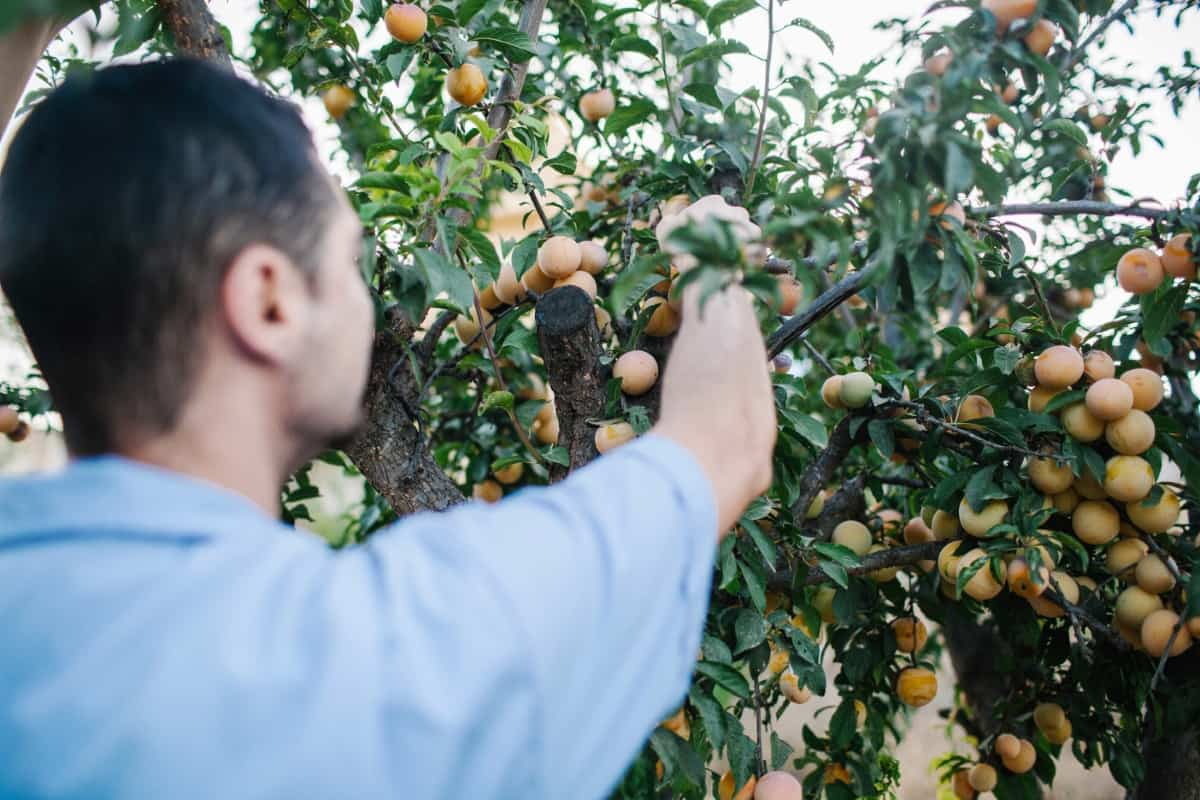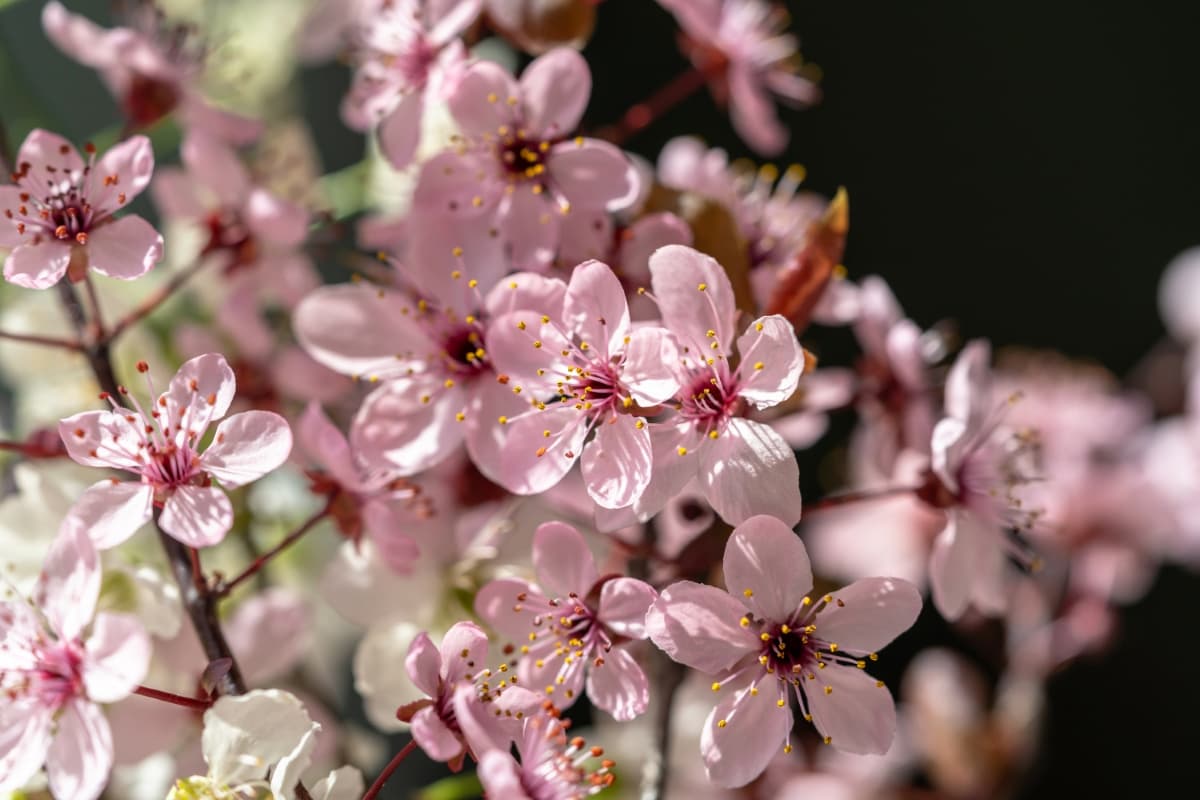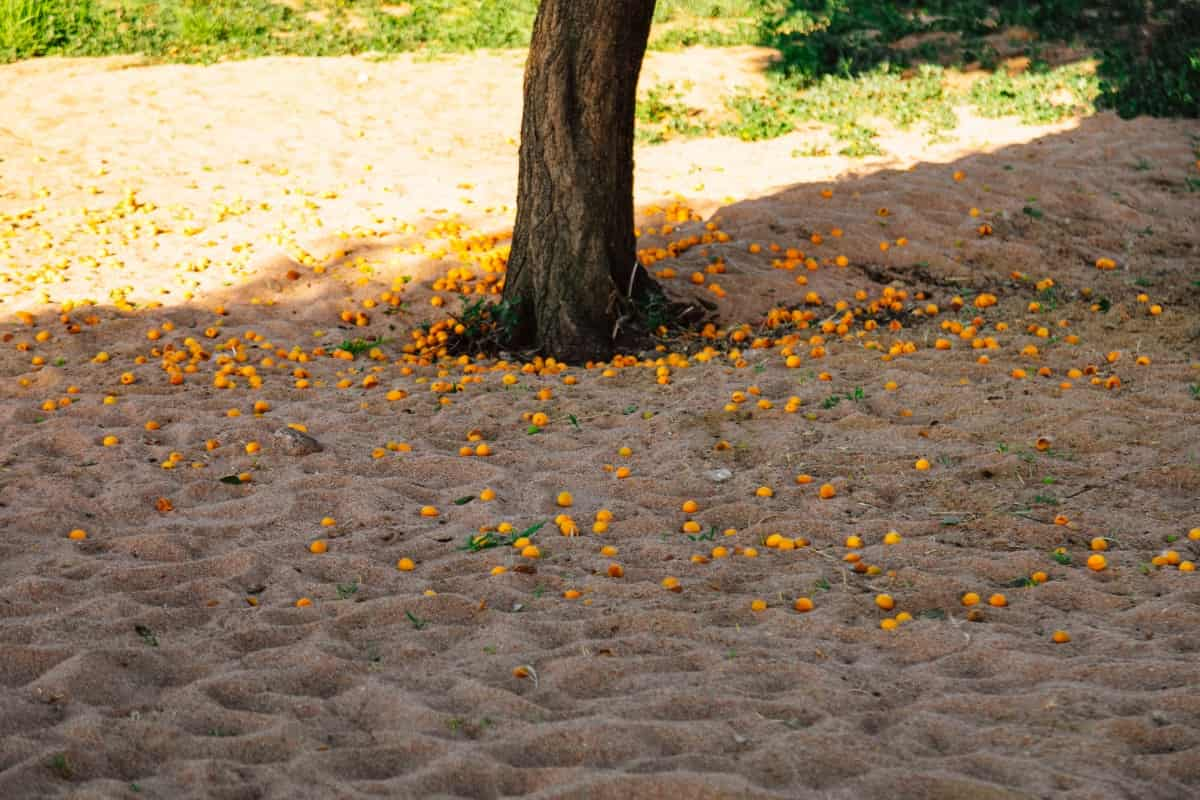Apricot trees are a delightful addition to any garden or orchard, filling the air with their delicate blossoms and providing juicy, flavorful fruits. But sometimes, these beautiful trees can be a bit finicky, dropping their flowers and fruit before we even have a chance to enjoy them. It’s frustrating when our Apricot dreams turn into disappointments. Understanding why flower and fruit drops occur in Apricot trees is crucial for taking effective preventive measures. By addressing issues, you can minimize unwanted drop events in your orchard.

How to Stop Flower and Fruit Drops in Apricot Trees
Causes of Flower and Fruit Drops in Apricot Trees
Apricot trees are known for their beautiful blooms and delicious fruits, but they can sometimes disappoint by prematurely dropping their flowers and fruit. Understanding the causes behind this phenomenon is crucial to prevent it from happening. Several factors can contribute to flower and fruit drops in Apricot trees. Poor pollination is a common cause of flower and fruit drops in Apricot trees.
If there aren’t enough bees or other pollinators visiting your Apricot tree, the flowers may not be properly fertilized and will drop off before they have a chance to develop into fruits. Another factor could be extreme weather conditions, such as frost or excessive heat, which can damage the blossoms and cause them to fall prematurely. Improper pruning techniques can lead to flower and fruit drops in Apricot trees.
If you prune your Apricot tree too heavily or at the wrong time of year, you may inadvertently remove potential buds or disrupt the tree’s natural growth cycle. Another possible cause is nutrient deficiencies in the soil. Apricot trees require minerals like nitrogen, phosphorus, potassium, calcium, magnesium, and iron for proper growth and development.
The tree may shed its flowers or young fruits without these essential nutrients. Pest infestations can also wreak havoc on Apricot trees by causing flower drop. Insects like aphids or mites feed on plant tissues, which weakens them, making it easier for flowers to fall off prematurely. Proper fertilization strategies are crucial to minimize flower and fruit drops in Apricot trees.
Implementing Proper Pruning Techniques to Prevent Flower and Fruit Drops in Apricot Trees
Proper pruning techniques prevent flower and fruit drops in Apricot trees. It’s important to understand the timing of pruning. Prune your Apricot trees during their dormant period, typically in late winter or early spring. This allows the tree to recover before it enters its active growth phase.
When pruning Apricot trees, focus on removing dead or diseased branches. These branches can contribute to stress on the tree and result in flower and fruit drops. Additionally, thinning out overcrowded areas helps improve air circulation and sunlight penetration for healthier blossoms. Using clean pruning tools is essential to avoid spreading diseases between cuts.
Maintaining Optimal Soil Conditions for Apricot Trees to Minimize Flower and Fruit Drops
Maintaining optimal soil conditions is crucial for the health and productivity of Apricot trees. Poor soil quality can contribute to flower and fruit drops, so providing the right environment for these trees to thrive is essential. One key factor in maintaining optimal soil conditions is ensuring proper drainage. Apricot trees prefer well-drained soil that doesn’t retain excessive moisture.
In case you missed it: Essential Apricot Tree Care Practices for Healthy Trees and More Yields

This helps prevent root rot and other diseases leading to flower and fruit drops. Another important aspect is providing adequate nutrients. Apricot trees require a balanced nitrogen, phosphorus, potassium, iron, and zinc supply. Regularly testing the soil pH levels can help determine any nutrient deficiencies or imbalances that need addressing.
Managing Pest and Disease Infestations to Reduce Flower and Fruit Drops in Apricot Trees
Pests and diseases can wreak havoc on Apricot trees, leading to significant flower and fruit drops. To maintain a healthy tree that produces abundant harvests, it is crucial to manage these infestations effectively. Regular monitoring of the tree for signs of pests or diseases is essential. Look for common culprits such as aphids, mites, powdery mildew, or brown rot. Catching them early allows for prompt action.
One effective pest control method is using organic insecticides or pesticides formulated for Apricot trees. These products are designed to target pests while minimizing harm to beneficial insects. Another approach involves promoting natural predators like ladybugs or lacewings that feed on harmful insects. Creating a diverse environment with native plants can attract these helpful creatures.
Enhancing Pollination Methods to Prevent Flower and Fruit Drops in Apricot Trees
Proper pollination plays a crucial role in the successful fruit set of Apricot trees. Inadequate or ineffective pollination can lead to flower and fruit drops, leaving you with a disappointing harvest. To prevent this, enhancing pollination methods in your Apricot orchard is essential. One way to improve pollination is by attracting more bees and other beneficial insects to your orchard.
These little helpers are natural pollinators that can significantly increase fruit set. Planting native flowers and creating habitats for these insects will entice them to visit your trees. Introducing compatible companion plants near your Apricot trees can help attract more pollinators as well. Plants like Lavender, Marigold, and Borage act as bee magnets and create a favorable environment for effective pollen transfer.
Regulating Watering Practices for Apricot Trees to Avoid Flower and Fruit Drops
Proper watering is crucial for preventing flower and fruit drops in Apricot trees. The key is finding the right balance – not too much water but not too little. Over-watering can lead to excessive vegetative growth, diverting energy from fruit production. On the other hand, underwatering can cause stress and result in premature shedding of flowers and fruits.
It’s important to understand your tree’s water needs to avoid this. Young Apricot trees require more frequent watering compared to mature ones. During hot summer months, increase irrigation frequency while monitoring soil moisture levels. Aim for moist but well-drained soil. Mulching around the tree helps retain moisture and prevent evaporation. Apply organic mulch, such as wood chips or straw, ensuring it doesn’t touch the trunk directly.
Utilizing Fertilization Strategies to Minimize Flower and Fruit Drops in Apricot Trees
Providing the right nutrients at the right time can significantly improve the tree’s overall health and productivity. One important aspect of fertilization is understanding the specific nutrient requirements of Apricot trees. They typically need a balanced blend of nitrogen, phosphorus, potassium, and trace elements like zinc and iron.
In case you missed it: Apricot Orchard Planning: Site Selection, Soil Preparation, and Planting

Applying a slow-release fertilizer during the dormant season can help provide these essential nutrients gradually over time. Timing is also key when it comes to fertilizing Apricot trees. It’s best to apply fertilizer in early spring before new growth begins.
Protecting Apricot Trees from Extreme Weather Conditions to Prevent Flower and Fruit Drops
Apricot trees are susceptible to damage from extreme weather conditions, which can lead to flower and fruit drops. Protecting your Apricot trees and ensuring a healthy harvest, taking preventive measures against these environmental challenges is important. Protective coverings are one of the most effective ways to shield your Apricot trees from extreme weather.
During periods of frost or hail, covering the trees with blankets or tarps can provide a barrier against the harsh elements. Additionally, installing windbreaks around your orchard can help reduce wind damage and prevent flower and fruit drops caused by strong gusts.
Frequently asked questions about How to Stop Flower Drops and Fruit Drops in Apricot Trees
What Nutrients Do Apricots Need to Prevent Flower and Fruit Drops?
Apricots require balanced fertilization with nitrogen, phosphorus, potassium, calcium, magnesium, and trace elements like boron and zinc.
Are There Any Natural Remedies for Preventing Flower Drops?
Yes! Spraying a solution of liquid seaweed extract on the foliage during flowering can stimulate healthier blooms.
Can Pruning Help Reduce Flower Drops in My Apricot Tree?
Pruning out crowded branches will allow better air circulation within the canopy and promote more efficient pollination.
Should I Thin Out Excess Fruits on My Tree?
Thinning is essential as it helps divert energy towards fewer fruits, which are more likely to reach maturity without dropping prematurely.
In case you missed it: 6 Causes of Dying Apricots and How to Fix It?

Conclusion
Preventing flower and fruit drops in Apricot trees requires proper pruning techniques, optimal soil conditions, pest and disease management, enhanced pollination methods, regulated watering practices, strategic fertilization strategies, and protection from extreme weather conditions. By addressing these factors and implementing the necessary measures, you can significantly reduce or even eliminate the occurrence of flower and fruit drops in Apricot trees. With patience and diligence, you can enjoy bountiful harvests of delicious Apricots year after year.
- Feed Your Flock for Less: Top 10 Tips to Save on Chicken Feed
- Ultimate Guide to Ossabaw Island Hog: Breeding, Raising, Diet, and Care
- Hatching Answers: The Top 10 Reasons Your Chickens Aren’t Laying Eggs
- Eggs and Economics: Breaking Down the Cost of Raising Backyard Chickens
- Defend Your Greens: Proven Methods to Keep Iguanas Out of Your Garden
- Ultimate Guide to Cinnamon Queen Chicken: A Comprehensive Guide for Beginners
- Ultimate Guide to California Tan Chicken: Breeding, Raising, Diet, Egg-Production and Care
- Ultimate Guide to Marsh Daisy Chicken: Breeding, Raising, Diet, and Care
- 10 Types of Chicken Farming Businesses You Can Start for Profits